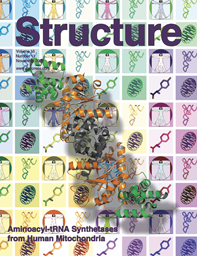Description
The flatten_obj python script combines multiple objects or states into a single object,
renaming chains where required.
This is particularly useful for dealing with biological assemblies, which are
loaded as multi-state objects when fetched using fetch PDBID, type=pdb1. It
can also be used as a quick way to combine multiple objects without causing
collisions between chain identifiers.
The command re-letters chains to avoid collisions. Older versions of PyMOL
restrict the chain id to a single character, so the script will fail for
assemblies with >62 chains. With more recent versions, this problem is solved
with multi-character chain IDs. Several options are available for how
re-lettering should occur.
Usage
flatten_obj name, selection[, state[, rename[, quiet[, chain_map]]]]
Arguments
- name = a unique name for the ..→
